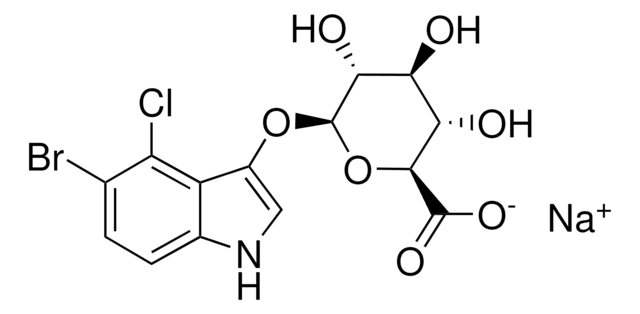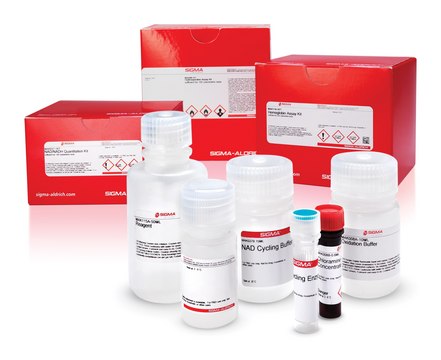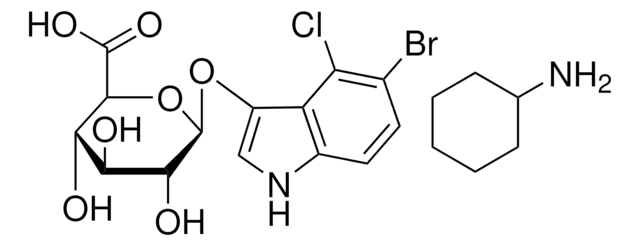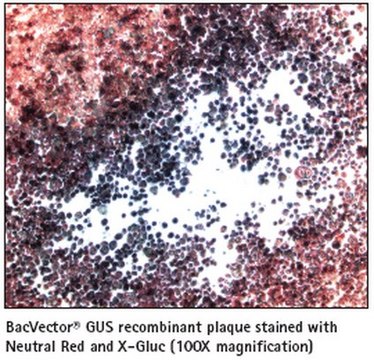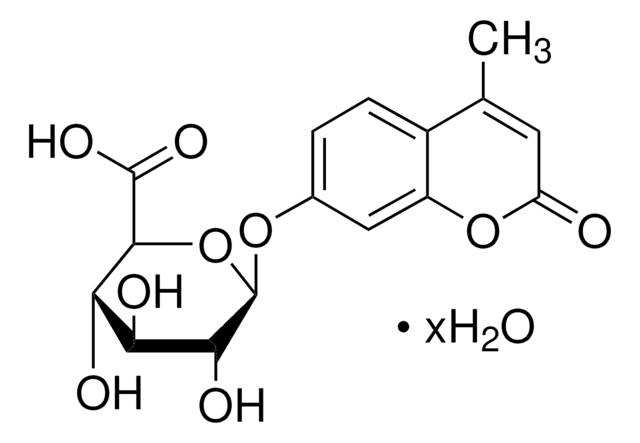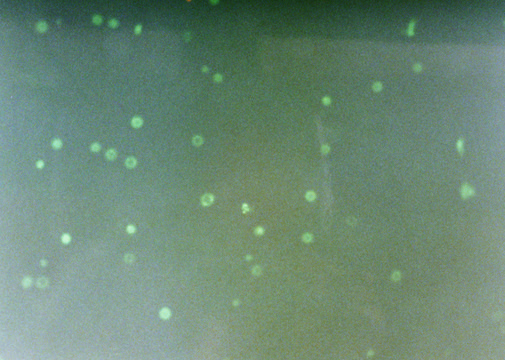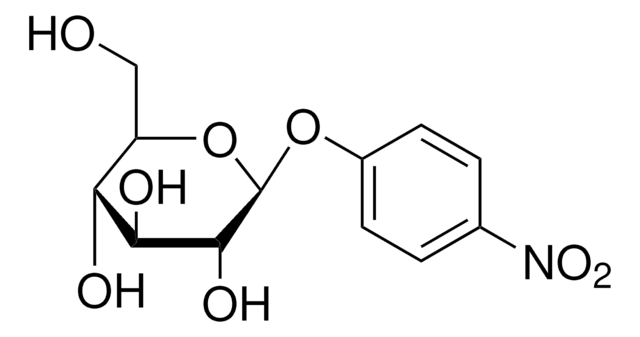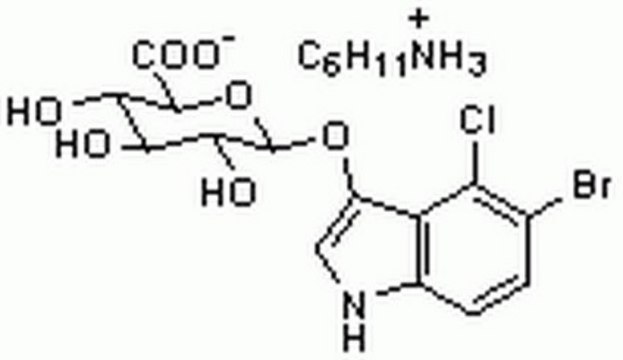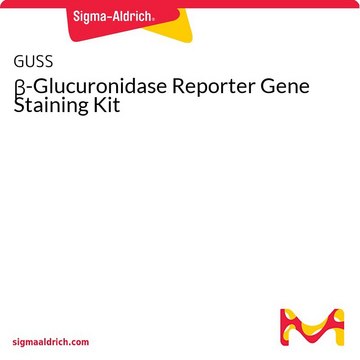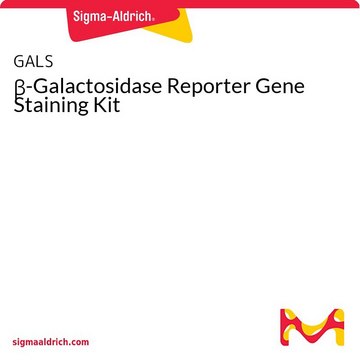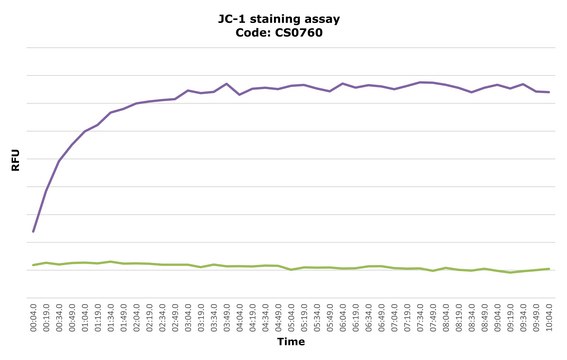GUSS
β-Glucuronidase Reporter Gene Staining Kit
Synonym(s):
β-Glucuronidase Staining Kit, Reporter Gene Kit, Staining Kit for Glucuronidase
Select a Size
¥5,501.10
Select a Size
About This Item
¥5,501.10
Recommended Products
usage
kit sufficient for 100 histochemical assays
Quality Level
technique(s)
microbe id | staining: suitable
shipped in
dry ice
storage temp.
−20°C
1 of 4
This Item | GALS | CS0760 | LUC1 |
|---|---|---|---|
| technique(s) microbe id | staining: suitable | technique(s) microbe id | staining: suitable | technique(s) flow cytometry: suitable, protein staining: suitable | technique(s) - |
| shipped in dry ice | shipped in dry ice | shipped in dry ice | shipped in - |
| usage kit sufficient for 100 histochemical assays | usage kit sufficient for 100 tests (using a 3.5 cm dish) | usage kit sufficient for 1000 reactions (using 96 multiwell plates), kit sufficient for 50 reactions (in a 2 mL cuvette) | usage kit sufficient for 100 assays |
| storage temp. −20°C | storage temp. −20°C | storage temp. −20°C | storage temp. −70°C |
General description
Application
Kit is suitable for biochemical activity assays, immunological assays and histochemical staining of tissue and cells.
Features and Benefits
- Histochemical staining of plant tissues expressing the E. coli GUS enzyme
- Ideally suited to plant expression studies due to very low GUS activity in plants and high enzyme stability
- GUS does not interfere with plant cell function or viability
Other Notes
Kit Components Only
- 2× Fixation Buffer 25 mL
- 5-Bromo-4-chloro-3-indolyl β-D-glucuronide cyclohexylammonium salt, ≥98% 1 mL/vial
- Reagent A for gus staining kit 50 mL
- Reagent B for gus staining kit 200 μL
- Reagent C for gus staining kit 200 μL
Hazard Statements
Precautionary Statements
Hazard Classifications
Aquatic Chronic 3
Storage Class Code
11 - Combustible Solids
Choose from one of the most recent versions:
Certificates of Analysis (COA)
Don't see the Right Version?
If you require a particular version, you can look up a specific certificate by the Lot or Batch number.
Already Own This Product?
Find documentation for the products that you have recently purchased in the Document Library.
Our team of scientists has experience in all areas of research including Life Science, Material Science, Chemical Synthesis, Chromatography, Analytical and many others.
Contact Technical Service